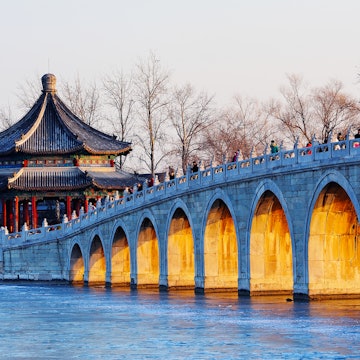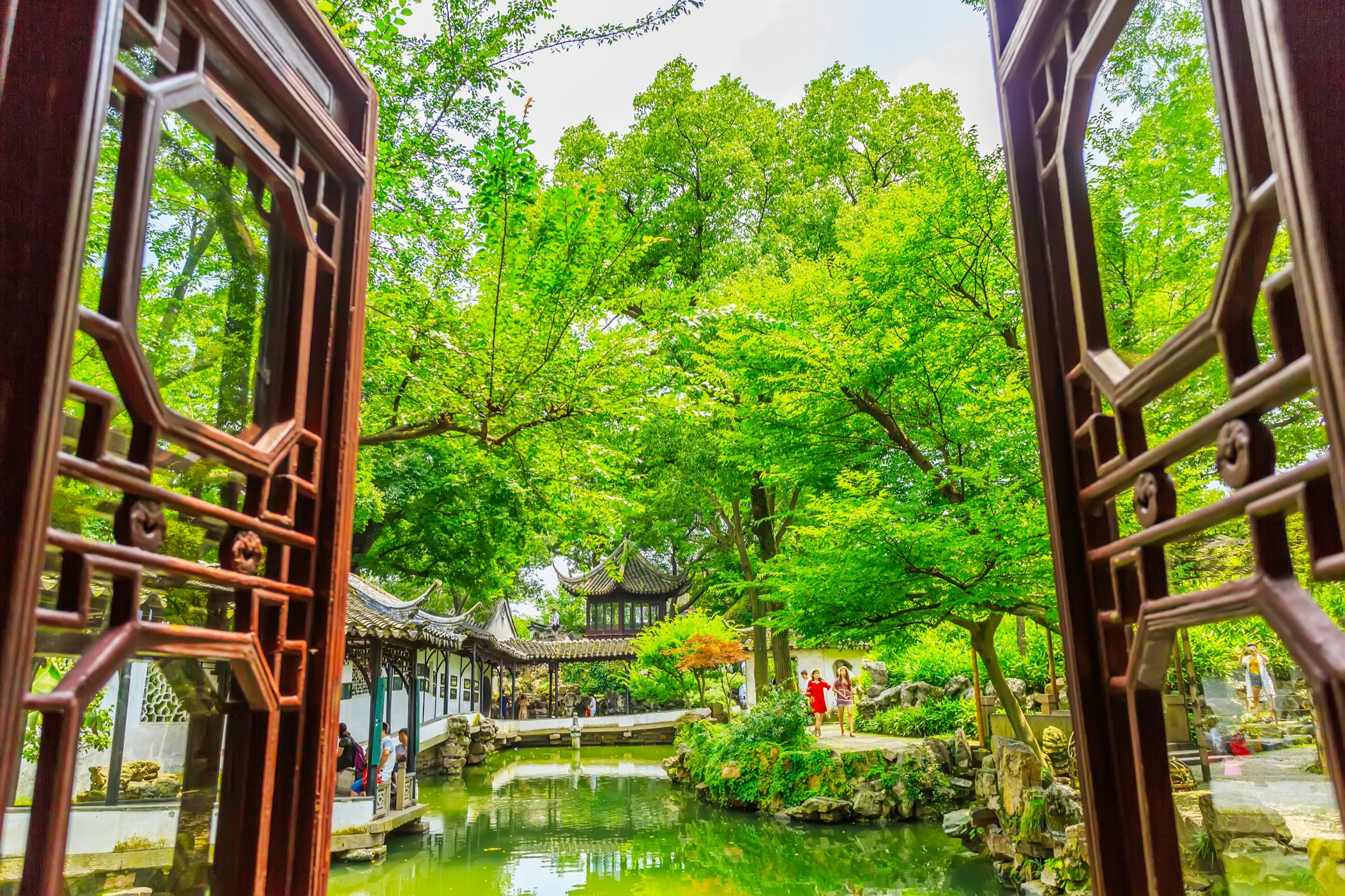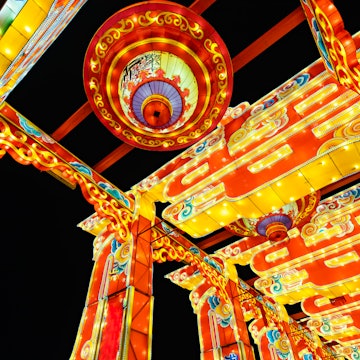
Culture, Craft and Beauty – A Week in Jiangsu Province
Sponsored by

Jun 2, 2022 • 6 min read

Jiangsu has thrived for millennia as a cradle of culture, commerce, and creativity © gyn9037 / Shutterstock
Nurtured by the life-giving waters of the Yangtze, Jiangsu has thrived for millennia as a cradle of culture, commerce, and creativity. Jiangsu people, instilled with an appreciation of the finer things, proudly lay claim to one of China’s greatest classical gardens, its most graceful opera, and in Nanjing, a walled city that was the ancient capital of China for nearly 500 years.
Truly a province of superlatives, one week is by no means enough time to experience all that Jiangsu has to offer, but, like the region’s exquisite Huaiyang cuisine, a taste will surely leave you wanting more.

Days 1-3: Nanjing
Nanjing, meaning ‘southern capital,’ is a leafy, forward-looking metropolis with one eye on the past. A major settlement as far back as the Six Dynasties period (220-589 AD), Nanjing was on course for even greater glory when it was crowed capital of the Ming dynasty in 1368. Nanjing at that time was one of the biggest and most populous cities in China. A mighty wall was built around it, and today some sections are still well preserved and open to visitors.
This glorious past can be explored at Purple Mountain, a forested jewel rising some 1,500 feet just east of the city center. The magnificent mausoleum of the Hongwu emperor, the Ming Xiaoling Tomb, is reached via the ‘Sacred Way’, a 1.2-mile-long funerary road lined by a royal guard of stone guardians – camels, elephants, lions, officials, and mythical beasts.
A short hike up Purple Mountain, at the top of a 1,575-foot-long stairway, lies the Sun Yatsen Mausoleum, where the early-20th-century leader of China’s Democratic Revolution lies in rest. Nanjing was selected as the new capital, albeit briefly, and Sun took his oath of office at the Presidential Palace in the heart of the city. The palace, now a museum, is a time capsule of this era in the modern history of China.
Hike into History: Exploring Nanjing’s incredible city wall

At the unmissable Nanjing Museum, the city’s 1930s heyday is further brought to life in an interactive gallery complete with working shops staffed by actors in period dress. As one of China's large-scale comprehensive museums, it has more than 430,000 pieces in its collections, such as the jade clothes of the royal family of the Han Dynasty, made with more than 2,600 pieces of the precious mineral.
It’s not all history in Nanjing, of course. A prestigious university town, Nanjing has an arty, youthful vibe, its broad avenues shaded by Parisian-style wutong trees and dotted with cafes and bookshops. After a stop for artful third-wave coffee and delectable baked goods at Skyways Bakery, nothing beats a stroll through the leafy campus of Nanjing University, with its splendid architecture and tree-shaded green spaces that invite an afternoon of sunny lounging.
A typical evening in the city starts at Nanjing Dapai Dang, a wildly popular restaurant chain that celebrates the abundant fare of the region, like duck (salted or roasted), pan-fried beef dumplings, and tangbao – paper-thin steamed dumplings stuffed with minced pork and chicken broth.
If you’re planning on making a night of it, try a ‘Holy Devil IPA’ at Master Gao’s, an early Chinese-owned craft brewery in China. Or for something more cultured, savor an evening of Kunqu opera, the style of choice for connoisseurs, at Lanyuan Theatre. Even newbies can follow along thanks to the excellent English subtitles displayed beside the stage.

Day 4: Gaochun
To the south of Jiangsu’s bustling capital, a slower, more relaxed way of life can be found in Gaochun, a county where traditional agriculture and nature remain at the forefront. Accessible hiking paths wind through the fertile countryside, past wildflowers and gently sloping plantations of green tea. It’s a great place to simply rent a bicycle and strike out into rural China, try your hand at fruit picking and tea-picking, or even join the locals on a fishing excursion. Celebrated for its slow travel ethos, Gaochun is also a wonderful place to sample authentic, organic farm-to-table cuisine, where freshness and flavor are paramount, and almost everything on your plate is local.

Day 5: Yangzhou
Just 50 minutes away by train is Yangzhou, a trove of traditional culture thanks to its historic trade in salt and silk, and its position along the Grand Canal. Wealthy merchants built elaborate ornamental gardens like Ge Garden, a celebration of the bamboo plant with dozens of varieties planted along winding pathways. The character ‘ge’ (个) was chosen because it resembles the triple leaf arrangement of bamboo, one of many playful allusions by the garden’s creator, a 19th century salt merchant.
Nearby is He Garden, formerly owned by He Zhige, a retired official in the late Qing Dynasty. He integrated Chinese techniques with western architectural ideas and built this private garden with the reputation of “the first garden in the late Qing Dynasty.”
Slender West Lake, Yangzhou’s most famous sight, is a large-scale lake garden built by wealthy salt merchants in the 18th century. Trimmed with willows, bridges and pavilions, it looks like one of China’s most famous beauty spots, West Lake in Hangzhou.
But above all, Yangzhou is most celebrated for its Huaiyang cuisine – delicate, refined and exquisitely presented. At Fuchun Teahouse, cups of fragrant green tea are paired with crisp-skinned pastries and delectable crab-roe soup dumplings, together with platters of Yangzhou fried rice, the dish the city gave to the world.

Days 6-7: Suzhou
The embodiment of beauty in China, the canal city of Suzhou has a history stretching more than 2,500 years and reached its prominence during the Ming dynasty. In pursuit of artistic perfection, scholars and merchants built elaborate gardens, of which more than 50 survive today. Nine have been awarded World Heritage status by Unesco, with the most famous of all being the Humble Administrator’s Garden.
Built in 1506 by a retired imperial official, the garden is a symphony of water features, artificial hills, rock gardens and buildings. Nothing is placed at random; circular ‘moon gates’ and flower-shaped windows precisely frame and crop garden views as if they were living paintings. The garden even ‘borrows’ external scenes – a technique called jiejing. From certain viewpoints, the 250-foot-high Beisi Pagoda, almost a mile away, appears part of the garden itself.
Lion Grove Garden, dating to 1342, is remarkable for its great clusters of gnarled and eroded rocks, some said to resemble Chinese guardian lions. Master of the Nets Garden, one of the most compact at just 1.5 acres, manipulates scale to create fantastical renditions of China’s natural landscapes in miniature. Mountains are represented by intricately weathered gongshi (‘scholar’s rocks’), looming over pools depicting lakes and oceans.
Jiangsu Province: Welcome to the Land of Water

In between garden-hopping, the timeless canal-side scenery of old Suzhou can be taken in with a stroll along Pingjiang Lu, lined with cafes and eateries. Near its northern end is the fabulous Suzhou Museum, designed by the late architect I.M. Pei. The architecture, mixing courtyards and water, is almost as impressive as the array of jade, ceramics and textiles within.
One of the most famous dishes in the region is songshu guiyu (‘sweet and sour mandarin’), a hefty mandarin fish in a tempura coating, fried and bathed in sweet and sour sauce. Wumen Renjia, a charming restaurant in a traditional Suzhou dwelling, serves a delicious version alongside its signature delicate shelled river shrimp.

Day 8: Water towns
Jiangsu’s famous shui zhen (water towns), with their belt-like canals crossed by petite stone bridges, are within easy reach of Suzhou. You can take your pick of which to visit; the charming town of Tongli is a good choice because it stills hums with local residents and it’s even connected to Suzhou’s subway.
For the best photographic opportunities, hop into one of the many tourist boats that ply the waterways. Or just pick a canal-side restaurant and while away the hours drinking tea, nibbling sweet qingtuan dumplings and watching the world float by.
Sponsored by Jiangsu Province
As a travel entertainment and inspirational media outlet, we sometimes incorporate brand sponsors into our efforts. This activity is clearly labeled across our platforms.
This story was crafted collaboratively between Jiangsu Province and Lonely Planet. Both parties provided research and curated content to produce this story. We disclose when information isn’t ours.
With sponsored content, both Lonely Planet and our brand partners have specific responsibilities:
-
Brand partner
Determines the concept, provides briefing, research material, and may provide feedback.
-
Lonely Planet
We provide expertise, firsthand insights, and verify with third-party sources when needed.













